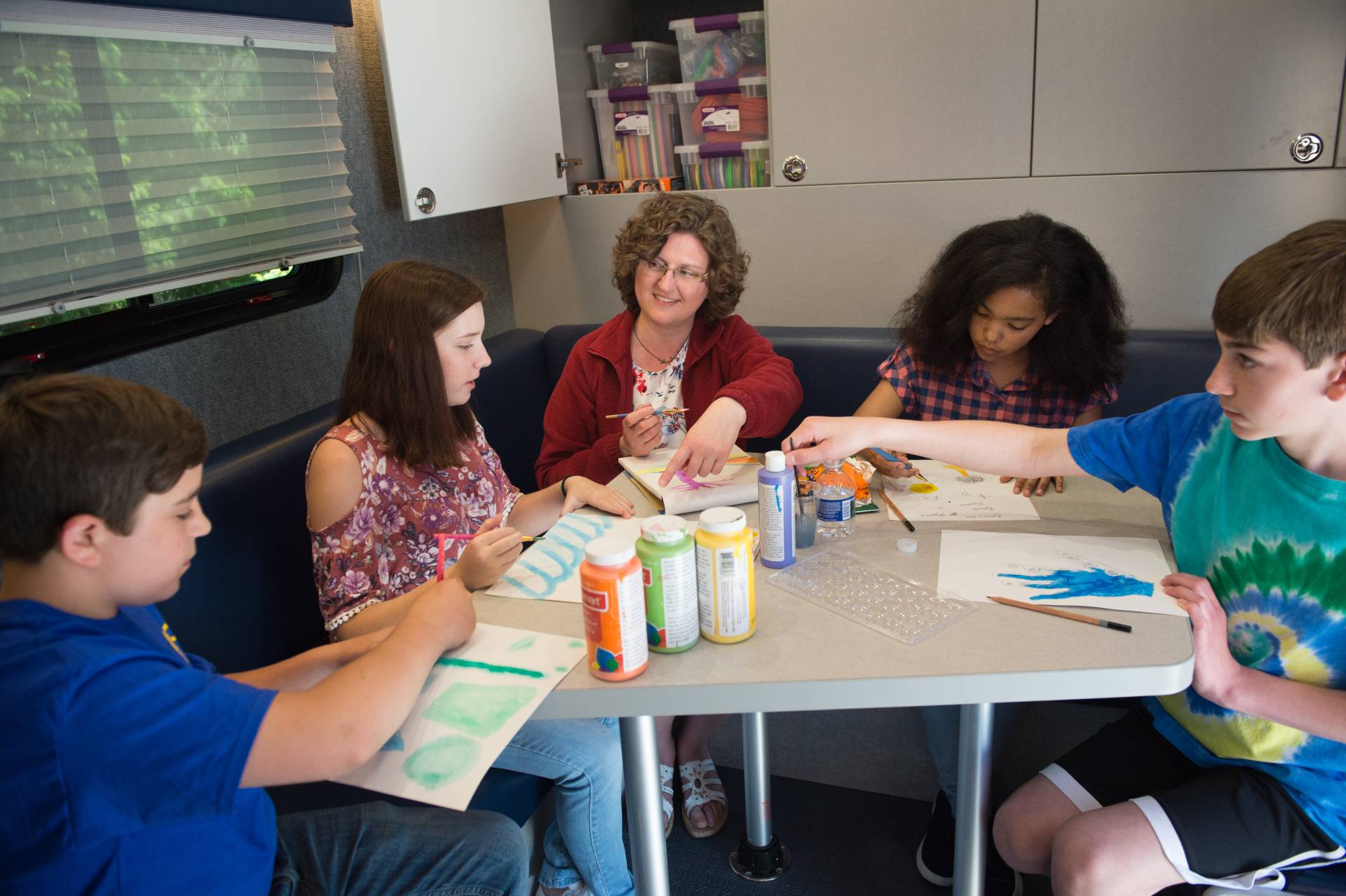2025-2026 School Year Enrollment Now Open. Click Here
2025-2026 School Year Enrollment Now Open. Click Here

Art takes many forms, pulling from the heart and intellect of the artist to create paintings, poetry, dance, theater and music. In education, study after study shows that art creates an outlet for creativity, self-expression and self-understanding that promotes academic achievement.
In the 21st century’s “creative economy,” people who can think artistically rise to the top because they are the innovators, problem-solvers and collaborative thinkers of the workplace. CCA’s personalized learning emphasizes the importance of art in education, freeing children to release their inner artists on the way to academic and personal success.
Even children who aren’t destined to pursue careers in the arts are natural-born artists, equipped with imagination and the need to share unspoken feelings and thoughts. The importance of art in life and education can’t be overstated. Art promotes creative thinking skills, which are the bedrock of problem-solving and understanding new academic concepts. Children immersed in creative environments are likelier to:
Parents and teachers can foster creative environments by encouraging children to notice the subtleties of colors and scents on nature walks, taking children to art museums to talk about the artworks, and keeping a spot stocked with all the paints, paper, clay and cameras needed to create masterworks when the artistic urge strikes.
CCA’s personalized learning delivers education customized to each student’s interests, challenges and distinct learning style. Accommodating that learning style is key to academic success, because children absorb new information through different pathways in the brain. While some children flourish through traditional lectures, those who are visual learners like to see new concepts in drawings and images. The children known as kinesthetic learners enjoy putting their hands on the lesson in some way.
Art’s visual and hands-on aspects make it easier to teach challenging concepts. Visuals can impart the complexities behind lessons in language, math or science. The picture that speaks a thousand words can be the one that sparks comprehension.
To convey lessons through art, parents and teachers can turn math equations into picture puzzles, look online for at-home experiments that demonstrate scientific principles, and assign children to create art that shows their understanding of new concepts. You’ll be amazed at what they create!
Art creates avenues for expression, offering a healthy way to release pent-up feelings and emotions. Through art, children get to know themselves better — their interests, their talents, their strengths and their challenges. Art in all its forms offers a range of mental health benefits.
For children with behavioral challenges, the importance of art education at primary level means that art can be harnessed as therapy — improving the mood and providing moments of self-regulation. Parents can find inspiration for art assignments in their own homes, through found objects to transform, food coloring to use as paints, or cellphones for making movies.
Art education introduces children to a world where school is fun and meaningful. This means that children offered artistic activities are better behaved and more attentive. As studies show, disciplinary rates go down and attendance goes up when students have access to fine arts classes.
What’s going on? Art classes recharge a child’s enthusiasm for learning. When their artwork is on display, they feel ownership of the learning space. When they find creative outlets for their imaginative ideas, their brains are fired up and ready to tackle academic challenges.
In fact, Americans for the Arts reports that children who participate regularly in the arts are much more likely to be recognized for academic achievement, participate in math and science fairs, and win awards for their writing. That level of active engagement in learning alleviates the boredom and frustration that can lead to misbehavior and skipped classes.
In art, there are no right or wrong answers. Boundaries and instructions are minimized. Through art, children learn specific disciplines even while they think up new ideas and make their own decisions. With each stroke of a brush or invention of a new dance step, they grow in confidence in their abilities, knowing they are safe to explore and express new thoughts through their paintbrushes, poetry and music.
The arts also push children outside their comfort zones. Parents can be surprised to see their shy child shine in the spotlight, taking a lead part in a play or playing a solo in the band concert.
Many artistic endeavors, including theater and music, are collaborative. Children learn to work with others, listen, communicate their ideas and be accountable for their part in the success — all confidence-building skills that future employers will demand.
The smile on a child exhibiting a masterpiece or taking a bow says it all. Art is essential to happiness. At CCA, we believe art is integral to learning. While other schools have cut back on their arts curricula as they chase success on standardized tests, CCA recognizes that a rich artistic life improves academics. Perhaps more importantly, art nurtures well-rounded children who are more deeply engaged with each other and in touch with their inner selves. Our teachers use art to personalize the learning experience, reaching each child through the power of creative thinking and artistic pathways. Reach out to Commonwealth Charter Academy today to learn how your child can be a creative thinker and a successful learner!
2025-2026 School Year Enrollment Now Open. Click Here